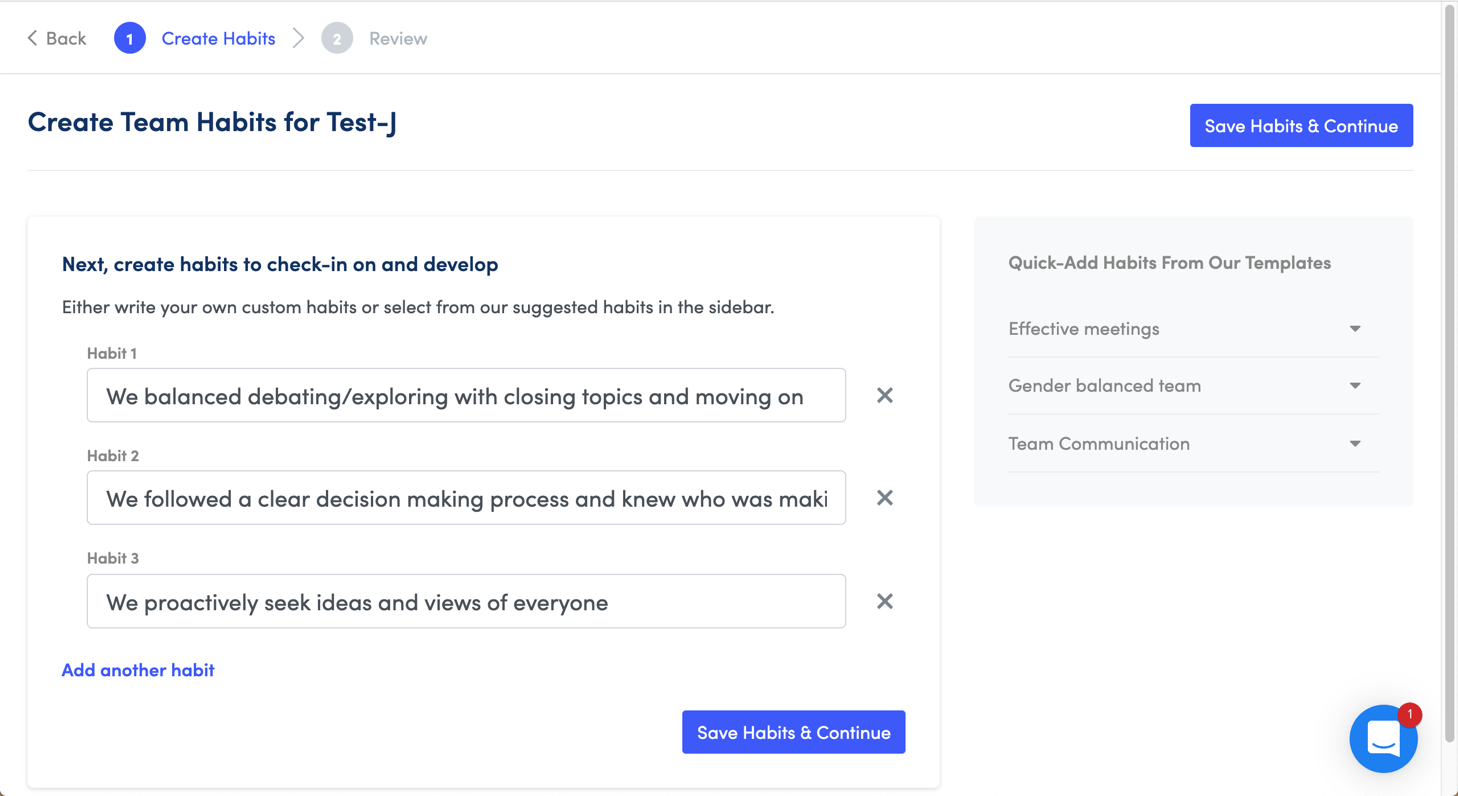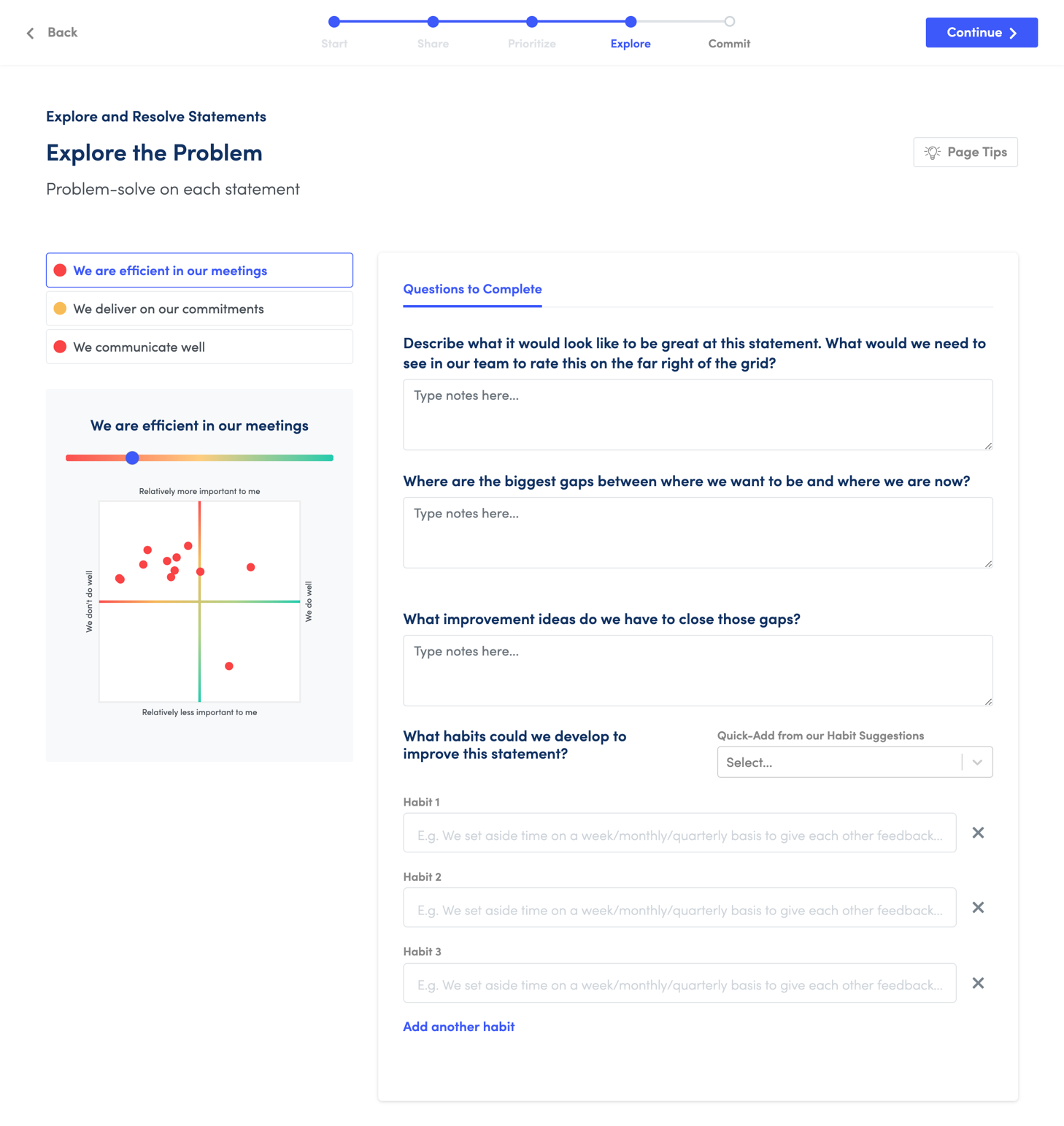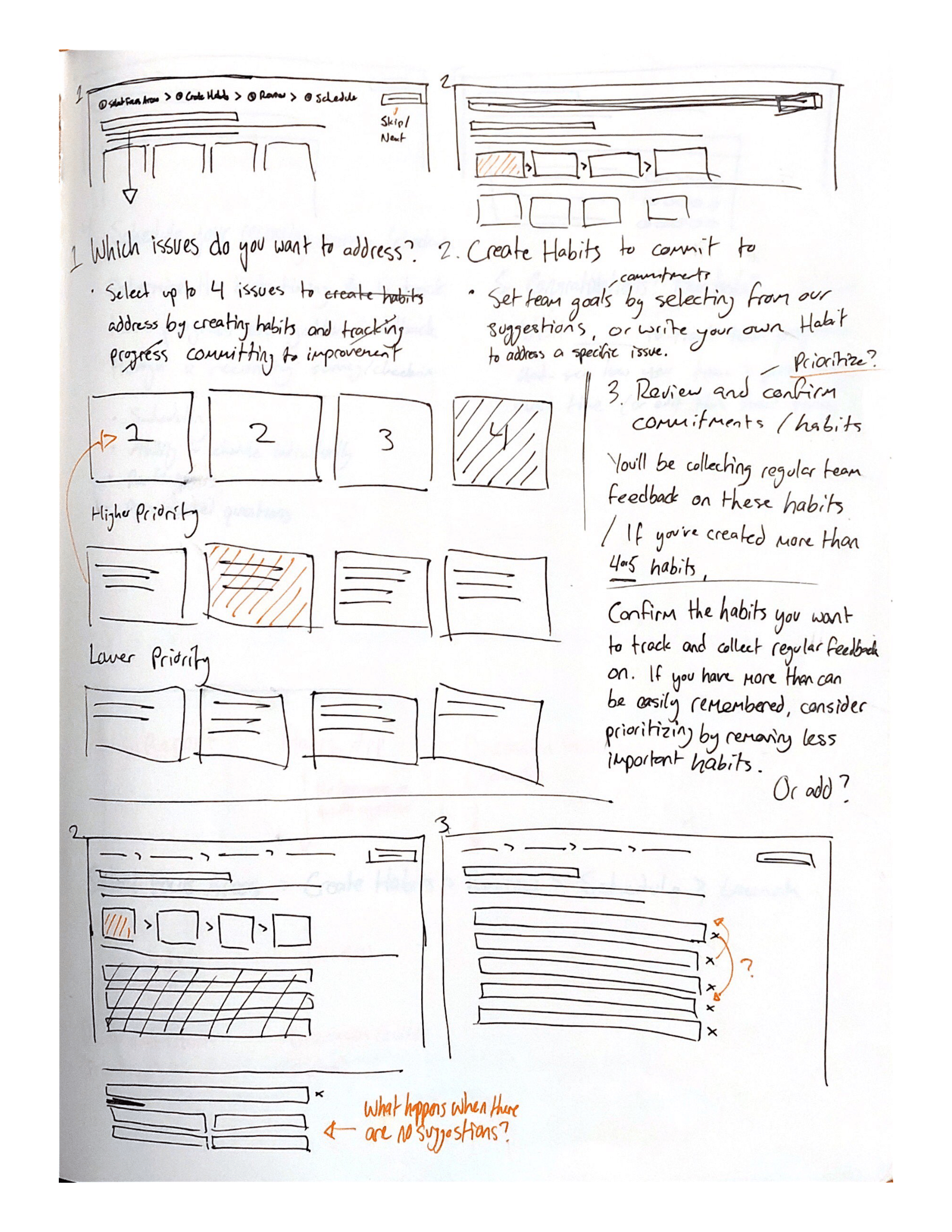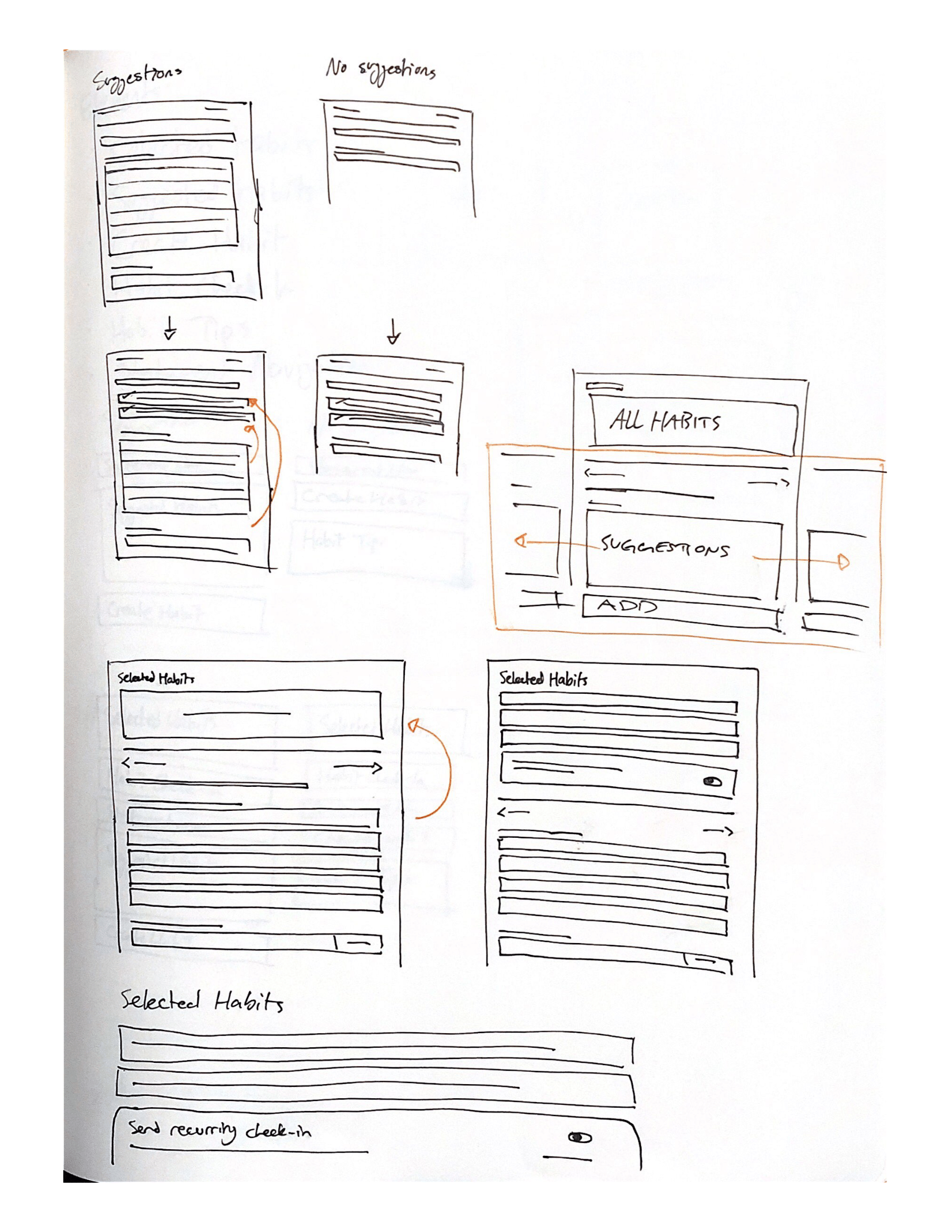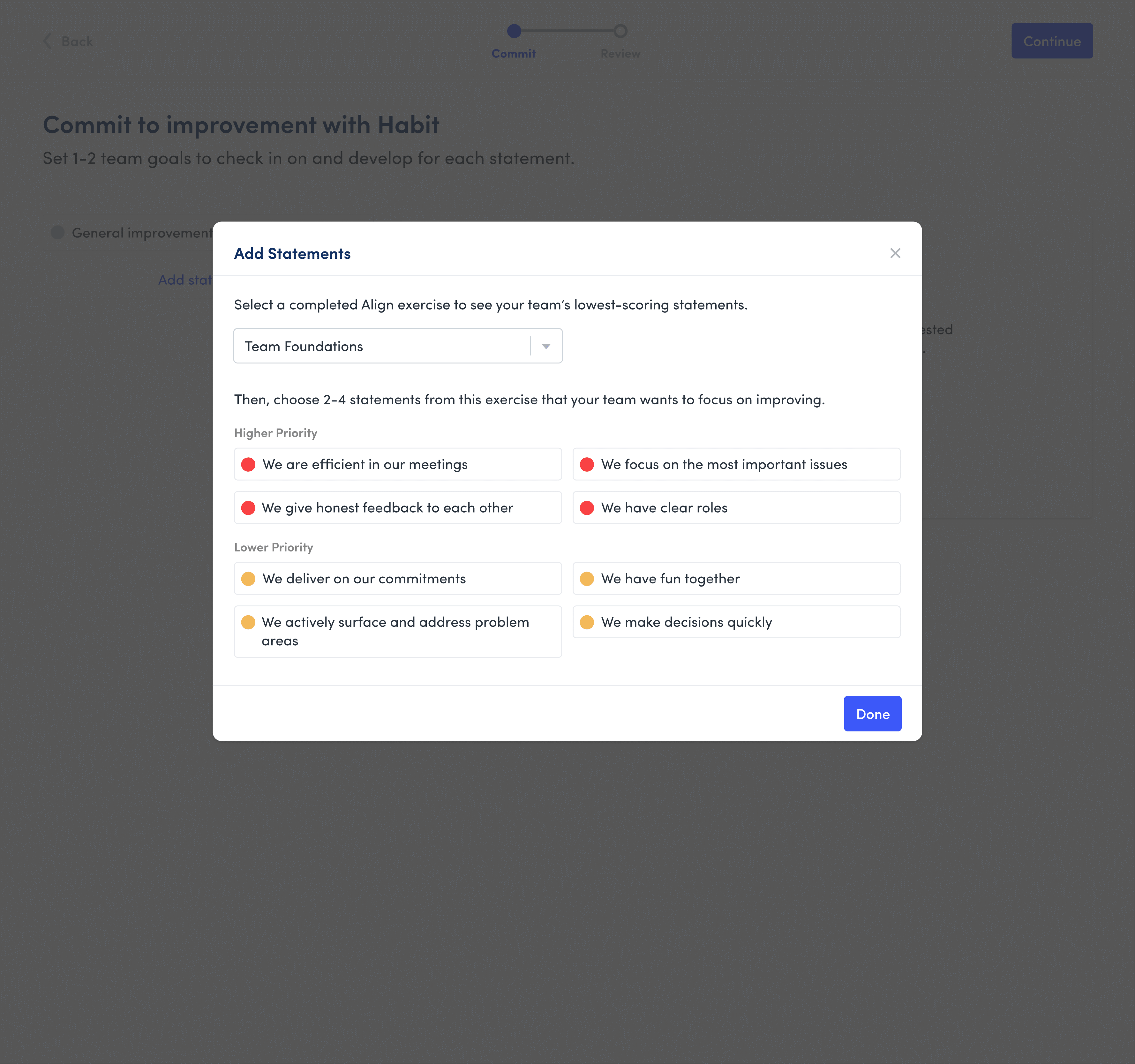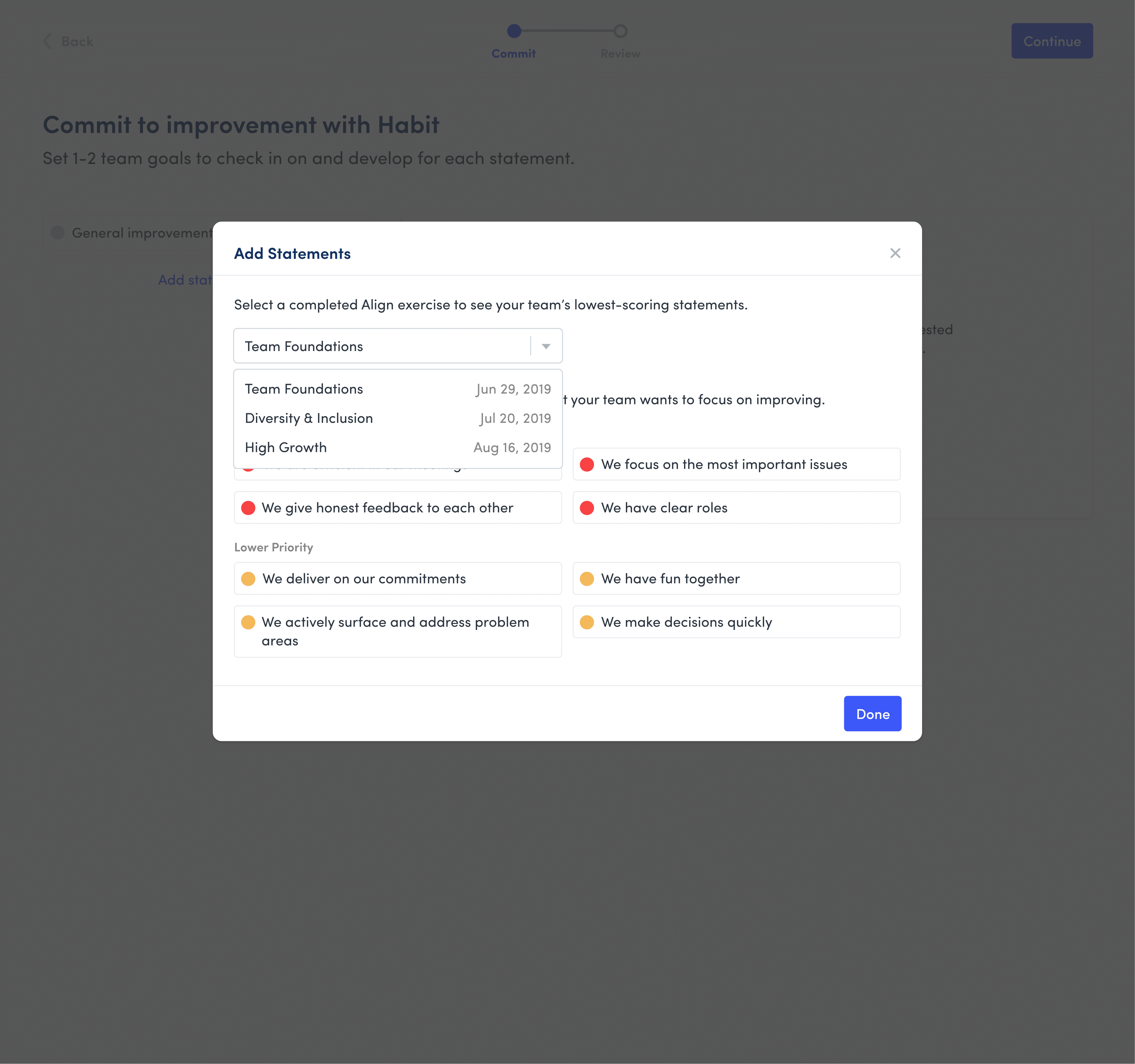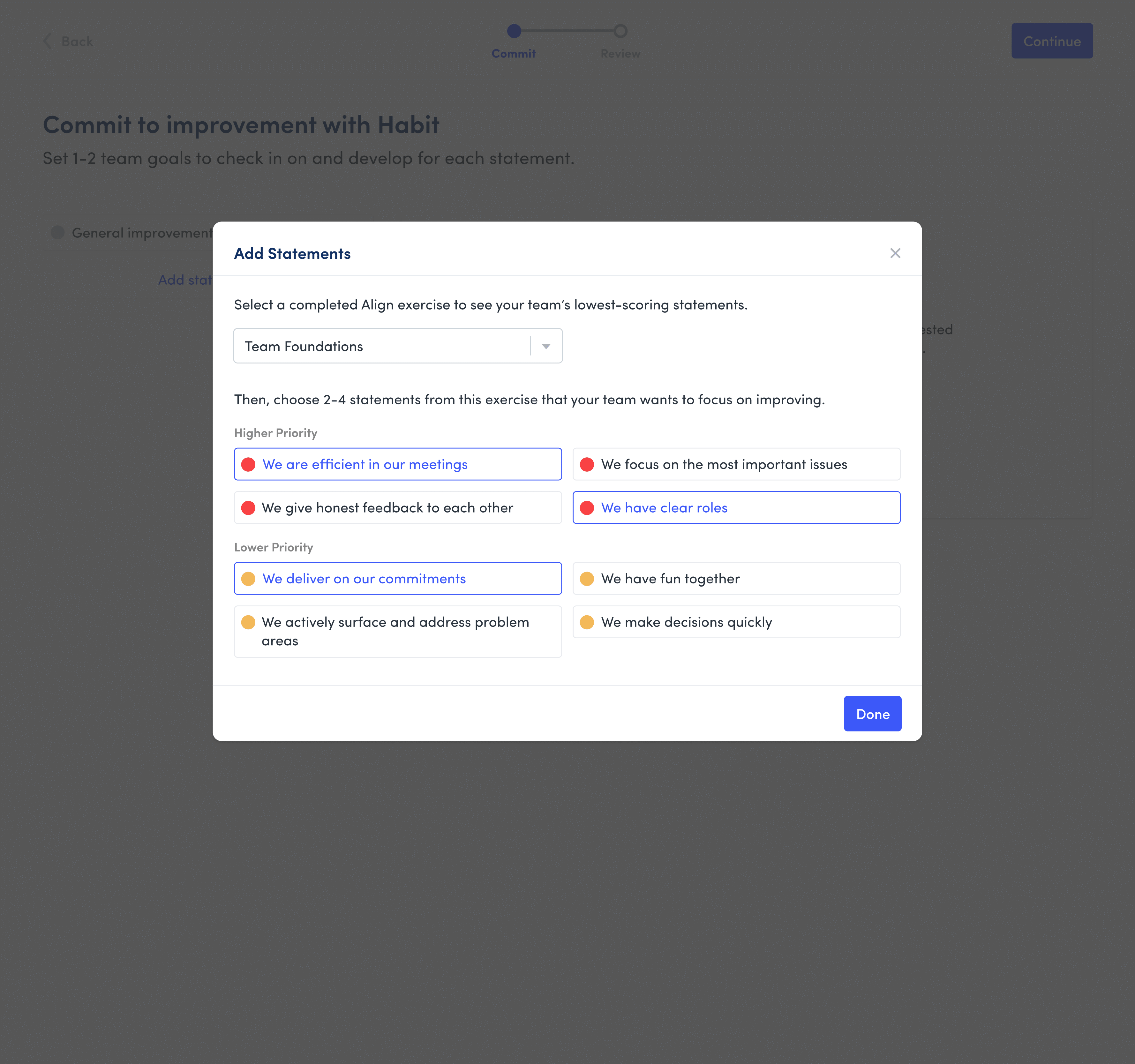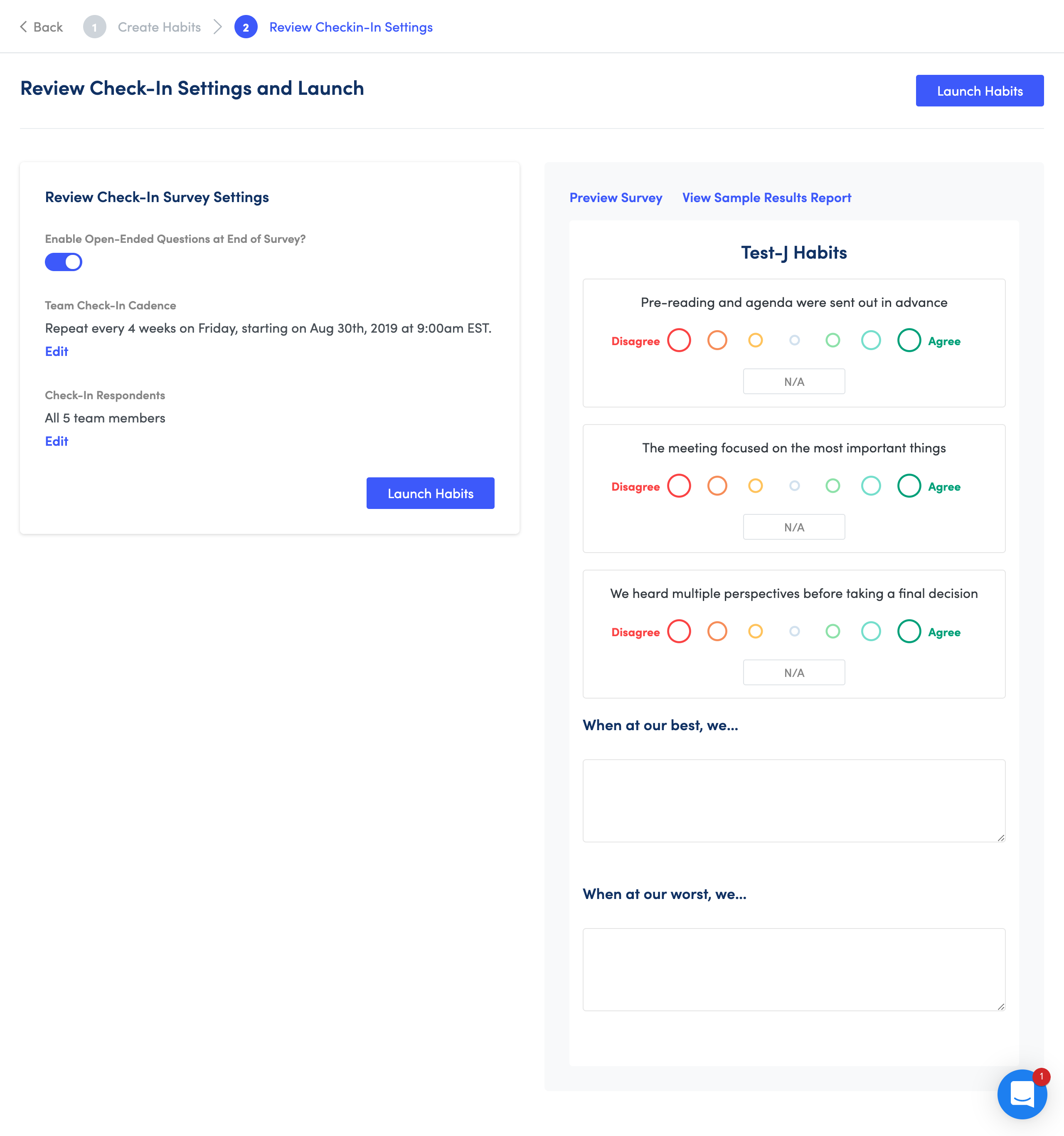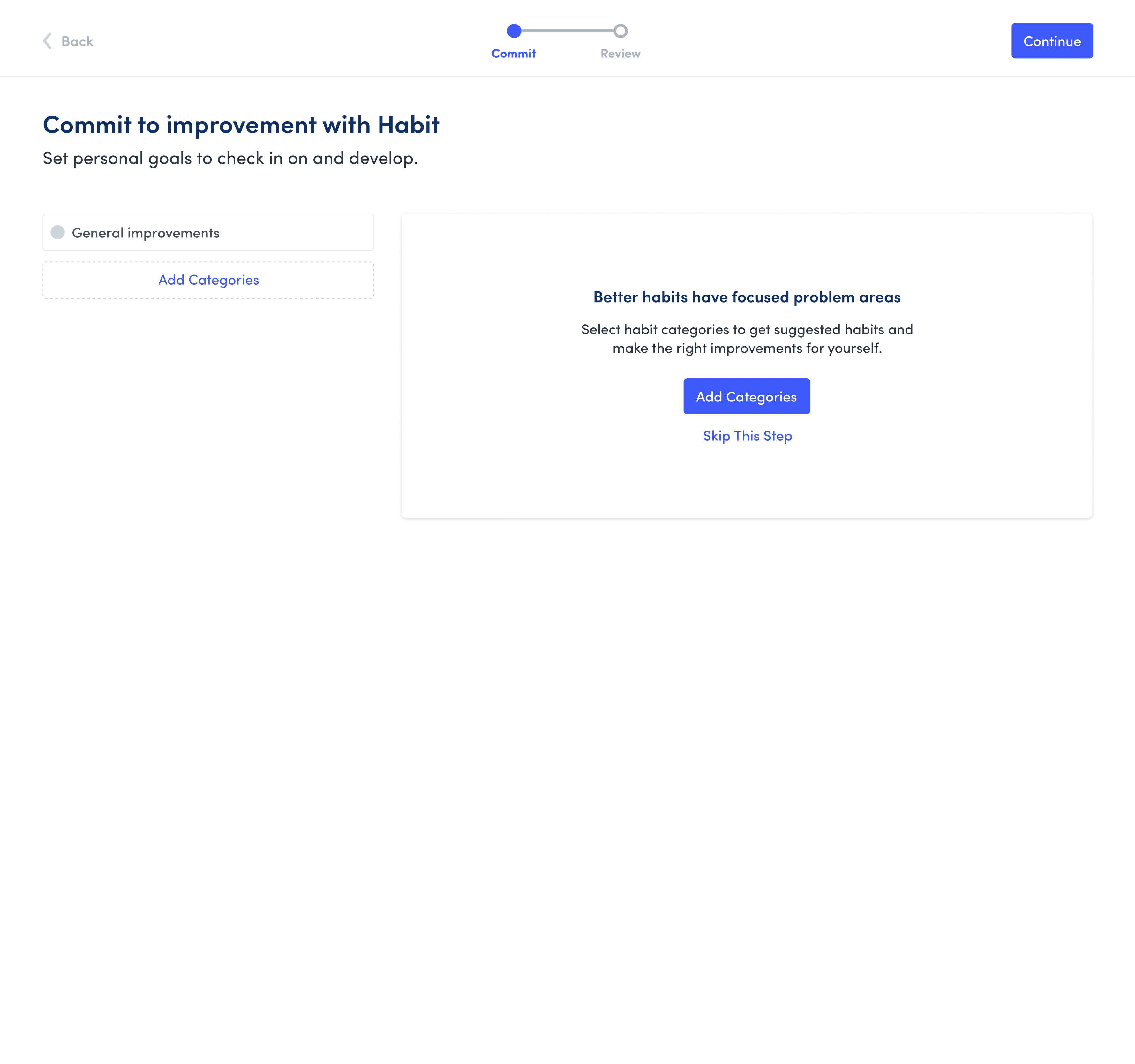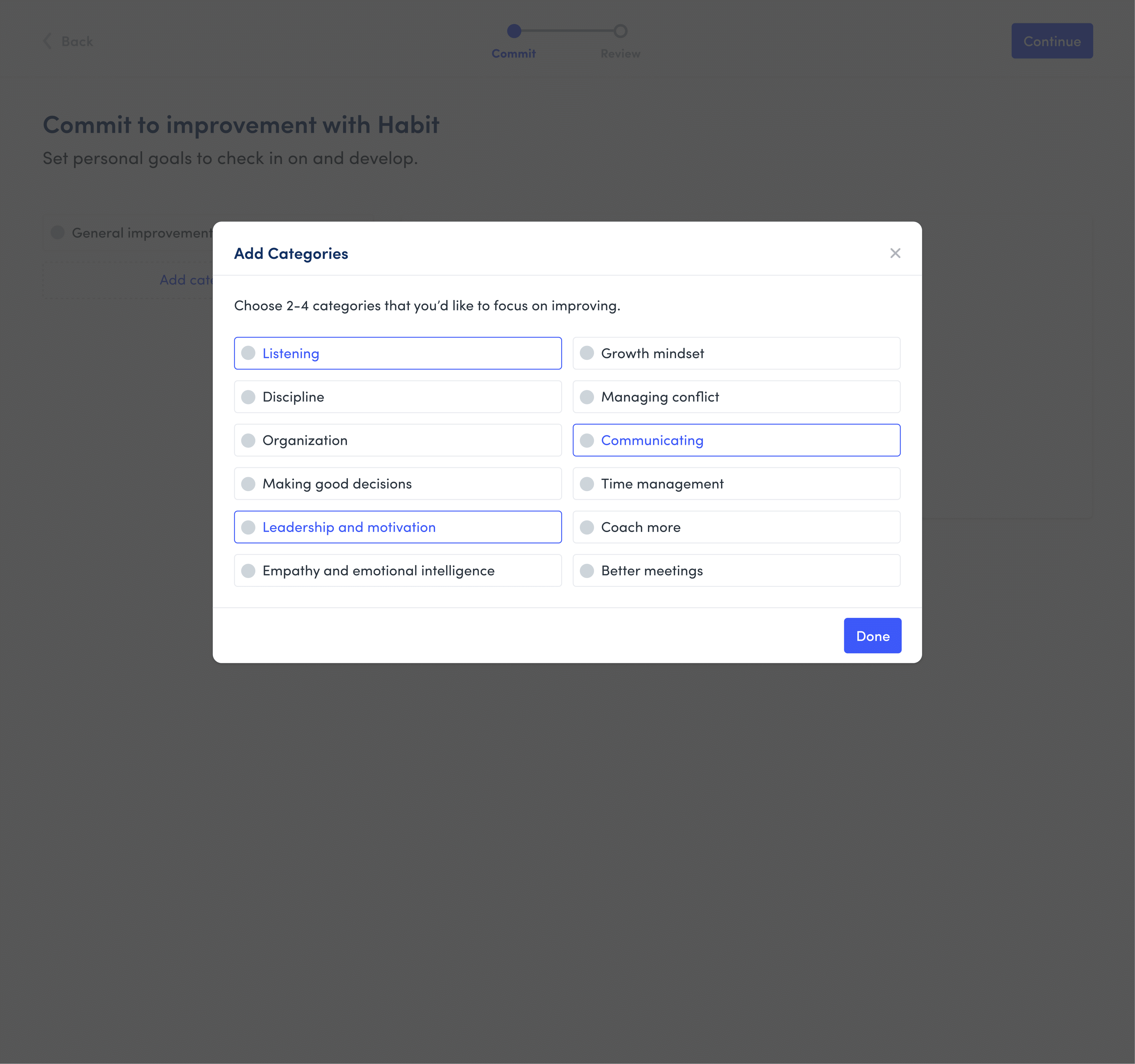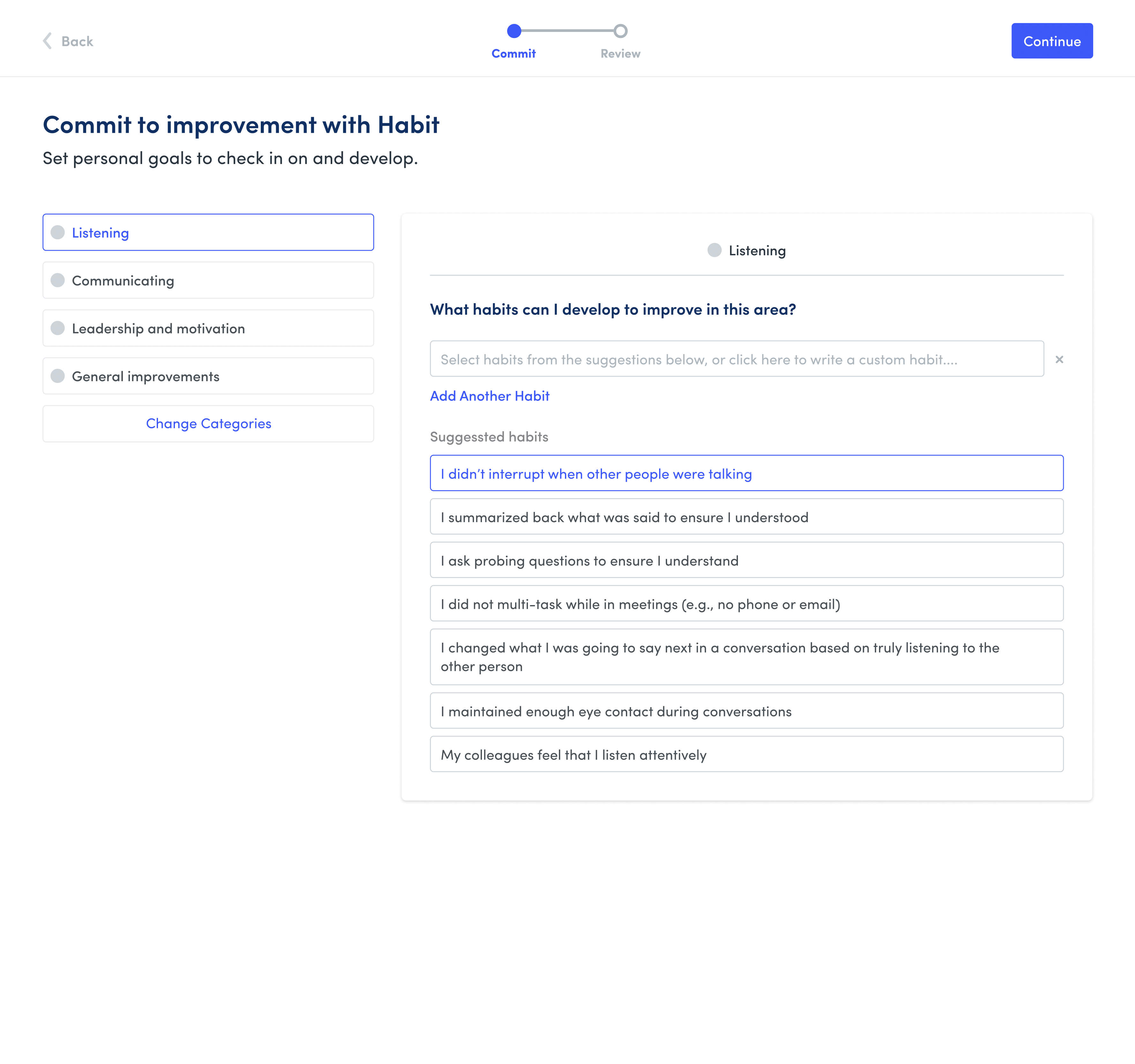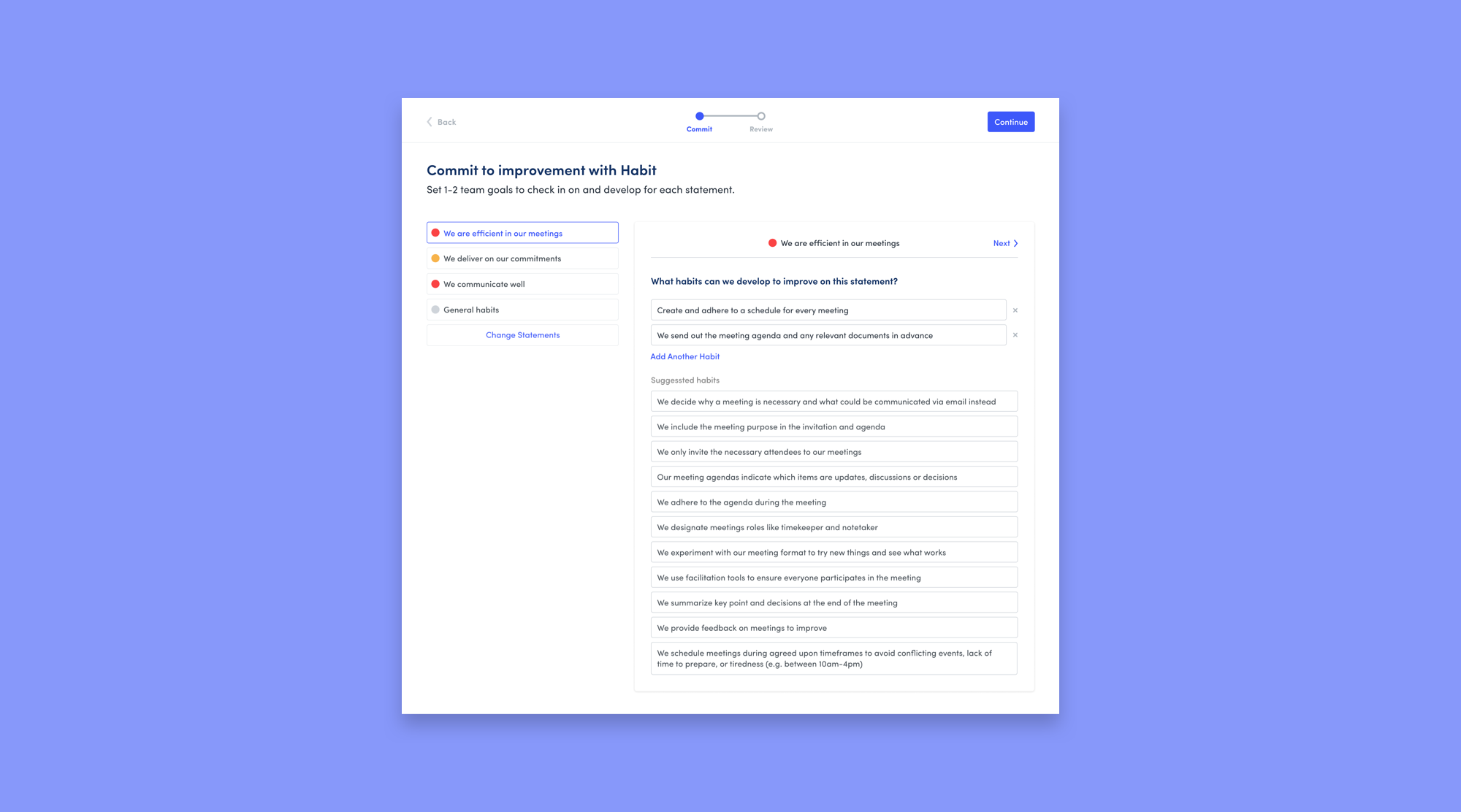

Habits are an important part of the Shift (now known as Valence) platform, meant to help teams build on identified weaknesses over an extended period of time with regular check-ins. However, Habits was not being utilised as much as Shift's other tools, like Align, even though Habits is suggested as a direct follow up to Align. Customer support was looking to increase the discoverability of Habits and improve the Habit creation experience so that more users would use the feature.
As I began to audit the existing experience, it became clear there was a much bigger challenge at hand. To start, users could create Habits in three different locations in the Shift platform:
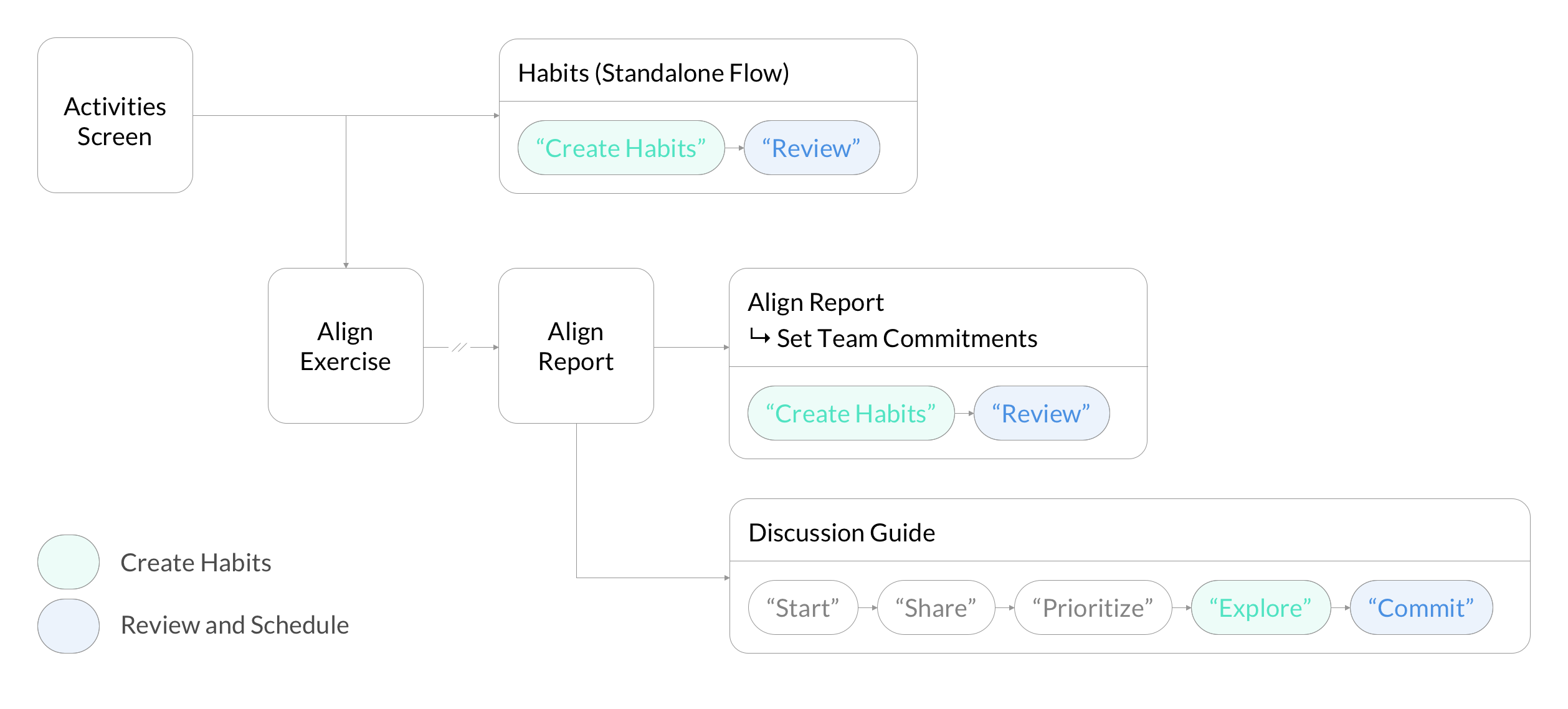
The big problem here was that the experience for creating Habits in each of these contexts was visually and structurally different. (From left to right: Standalone, Align Report, and Discussion Guide.)
On each of the screens above, the primary goal of the user is the same. But the inconsistency of the arrangements and visual presentation of elements, and of the directions to the user, were a source of confusion and dragging down the experience.
I set out to deliver a flexible Habits solution that could create a consistent experience across all three contexts. A few key things had to be considered:
I began by sketching and exploring different designs, before creating digital mockups and running quick user-tests with some coworkers to identify issues along the way.
Sketching different ideas for organizing the Habits flow and choosing suggested Habits.
While doing this, I considered some questions that were important in guiding me to the final design.
For the first question, I experimented with designs that had up to five distinct steps, though over time I decided that minimizing the number of steps (and the cognitive overhead they create) was the way to go.
For both the second and third questions, my answer was yes. Focusing on one statement at a time and emphasizing suggested habits formed the basis of all my designs going forward.
The last of those questions was particularly important, as it reminded me to consider the different states that could arise in each of the three existing flows, and reinforced my desire to create a design that could adapt to each scenario, without compromising overall consistency.
One more important decision deeply influenced the final design. To maximize use of existing assets and minimize development time, it was decided it would be best to base the design for the Habits flow off of the structure of the Discussion Guide.
The existing Habits creation step in the Discussion Guide (Left) influenced the new design for creating Habits (Right, Standalone Flow shown).
Because of the constraints imposed by the existing left-hand navigation, creating a consistent experience within the Align Report would have been impossible, especially once I had decided to base the layout off of the Discussion Guide.
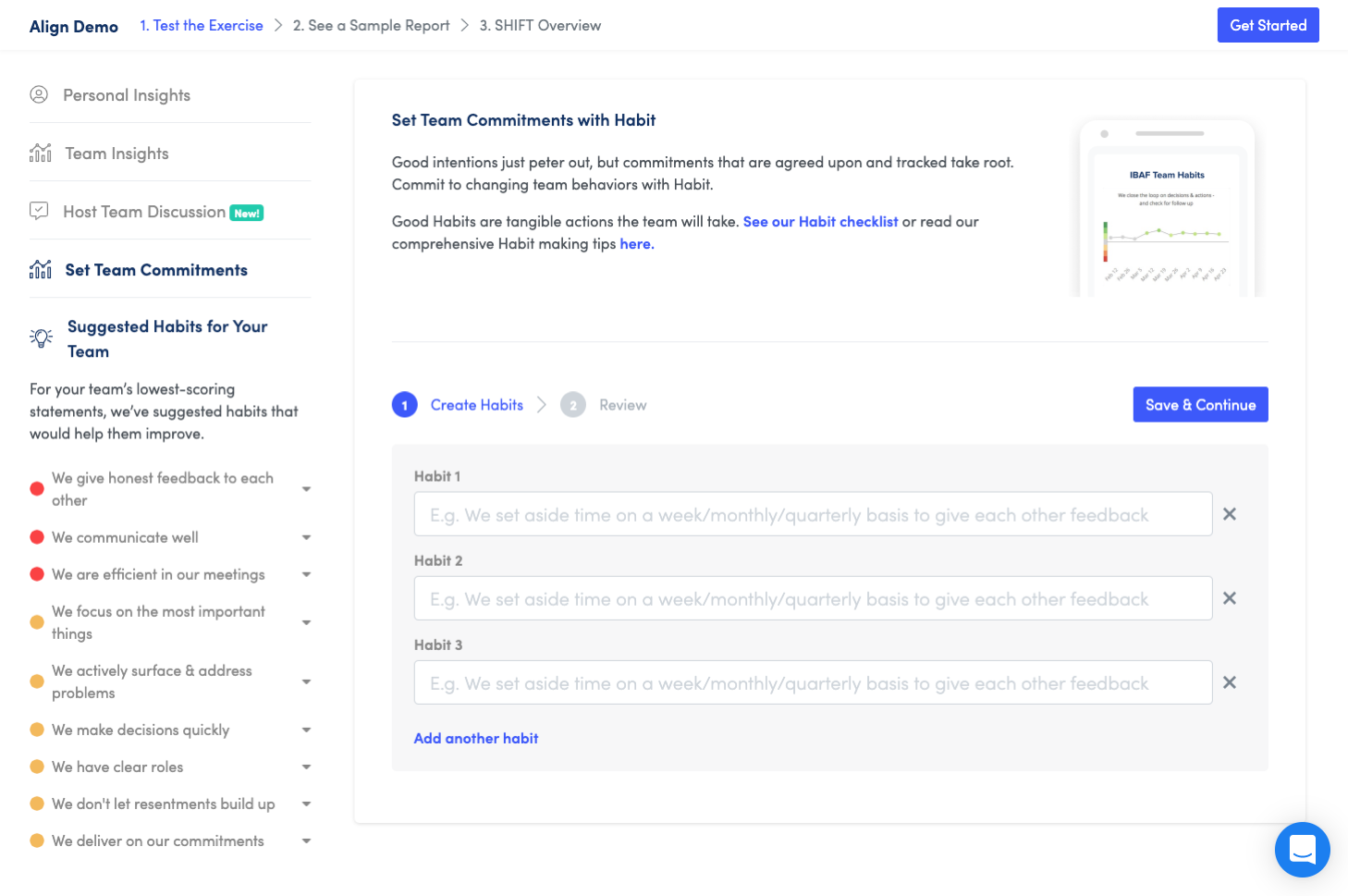
The existing design for creating Habits within the Align Report.
So, I took the part of the existing experience that didn't already exist in the Standalone Flow, while also being key to the Align Report – selecting priority statements – and made that the sole focus of this step. Instead of creating Habits directly within the Align Report, the user is taken to the Standalone flow to do so.
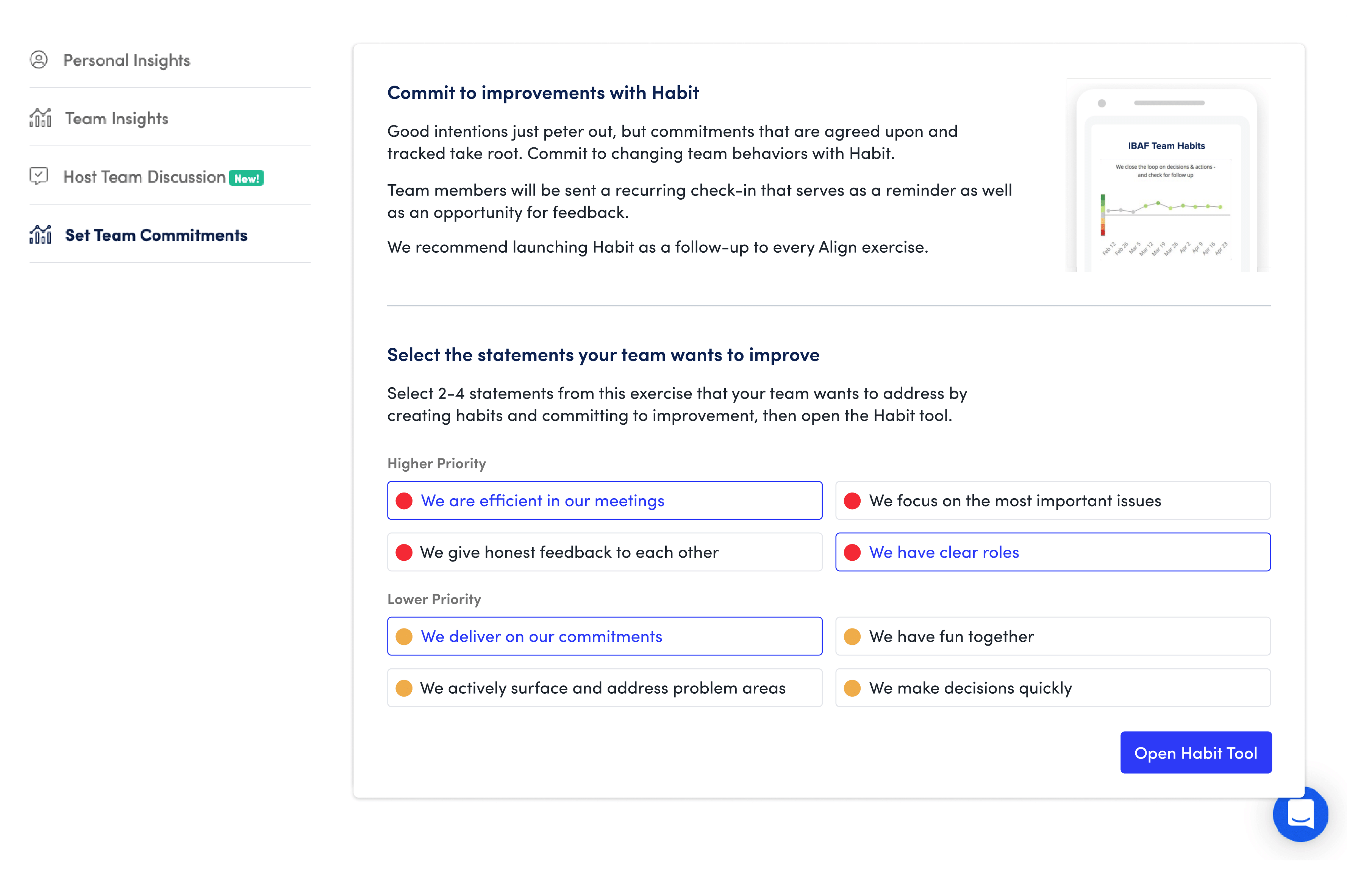
The updated design allows the user to select priority statements within the Align Report.
Not only did this help with consistency, but it also gives the user an improved introduction to Habits without overcluttering the page with information – the left pane was of particular concern previously.
With users in the Align Report being directed to the Standalone flow, users could now only create Habits in two places. And with the new design of the Standalone flow being based off of the Discussion Guide, the two flows could be much better aligned. Speaking of which....
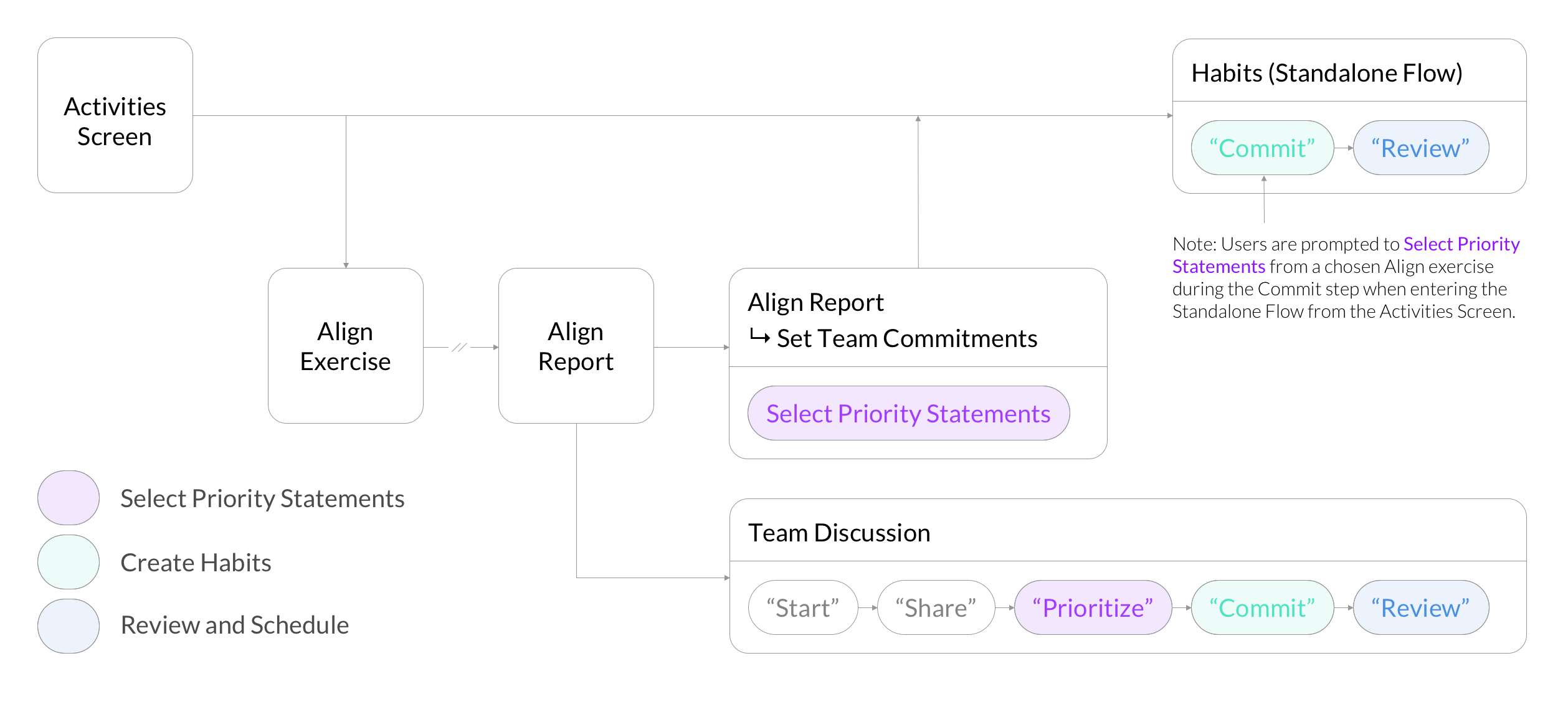
With the new design for the Standalone flow being based off of the Discussion Guide, this area only saw minimal changes. The last two steps in the Discussion Guide flow are now identical to the two steps in the Standalone Habit flow. Also, tweaks to the copy help make it more clear to users that they are creating Habits during this step.
Above: The existing design of the "Explore" step in the Discussion Guide. Below: The updated design, now called "Commit.".
The modularity of the new design also allows elements unique to the Discussion Guide – such as the discussion questions or the scatterplot – to be inserted without compromising the consistency of the design between flows.
Although I put a lot of focus into creating a more consistent experience between the three flows, I also revamped the core Habits flow to now focus on one statement at a time and emphasize suggested Habits.
Entering the Habits tool, the user is greeted by the new two-column structure borrowed from the Discussion Guide, with statement navigation on the left and Habit creation on the right. I also updated the navigation to closely match the existing navigation of the Discussion Guide.
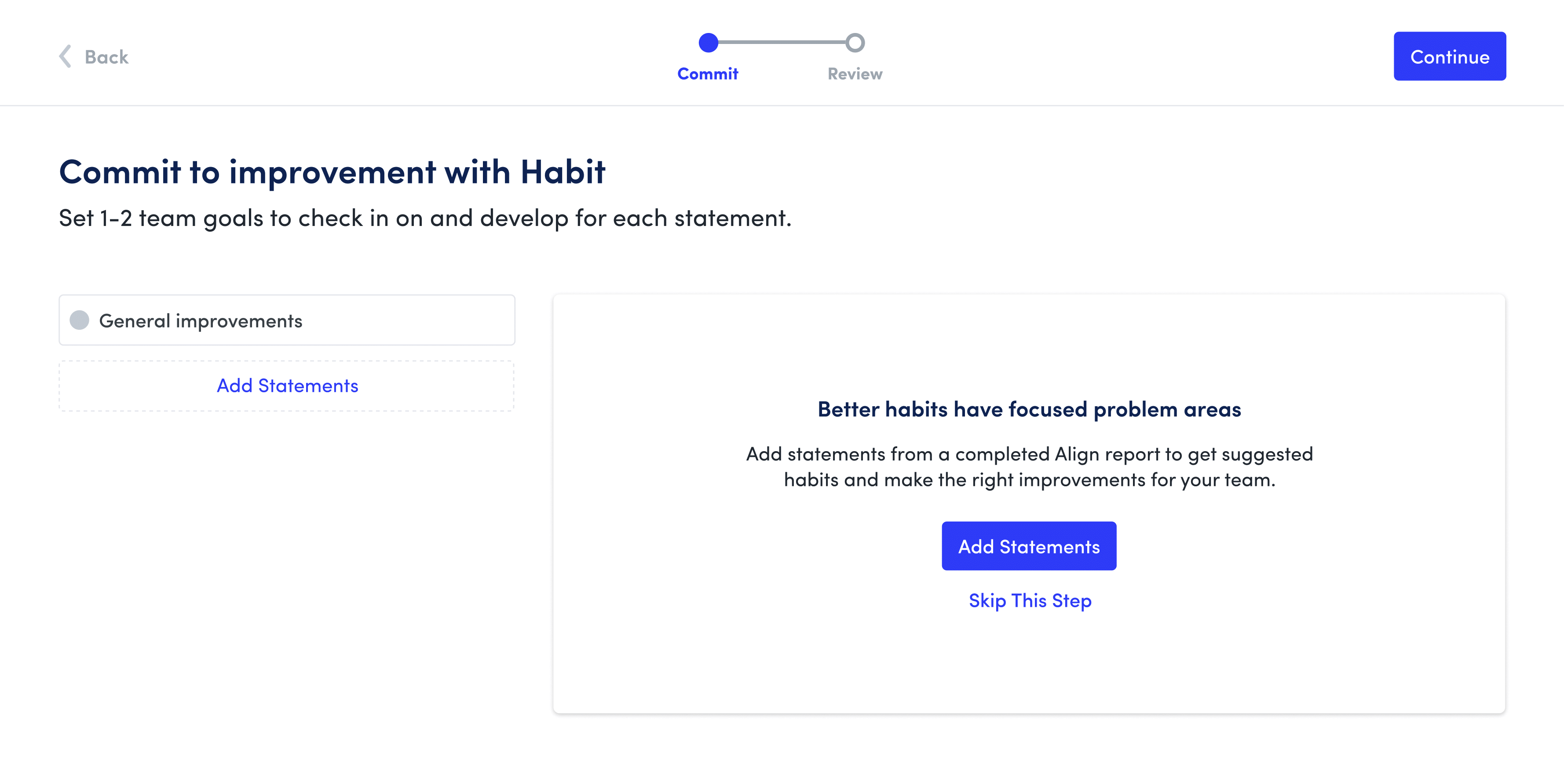
The user can then choose to add statements from a completed Align exercise, allowing them to get suggestions and create Habits that directly respond to identified team issues, which have been organized by priority in the modal.
This modal is specific to the Standalone flow, as in the Align Report and Discussion Guide flows, the user would have already completed this step.
Once completed, chosen statements appear on the left, along with the option to change statements. To the right is the revamped Habits creation interface.
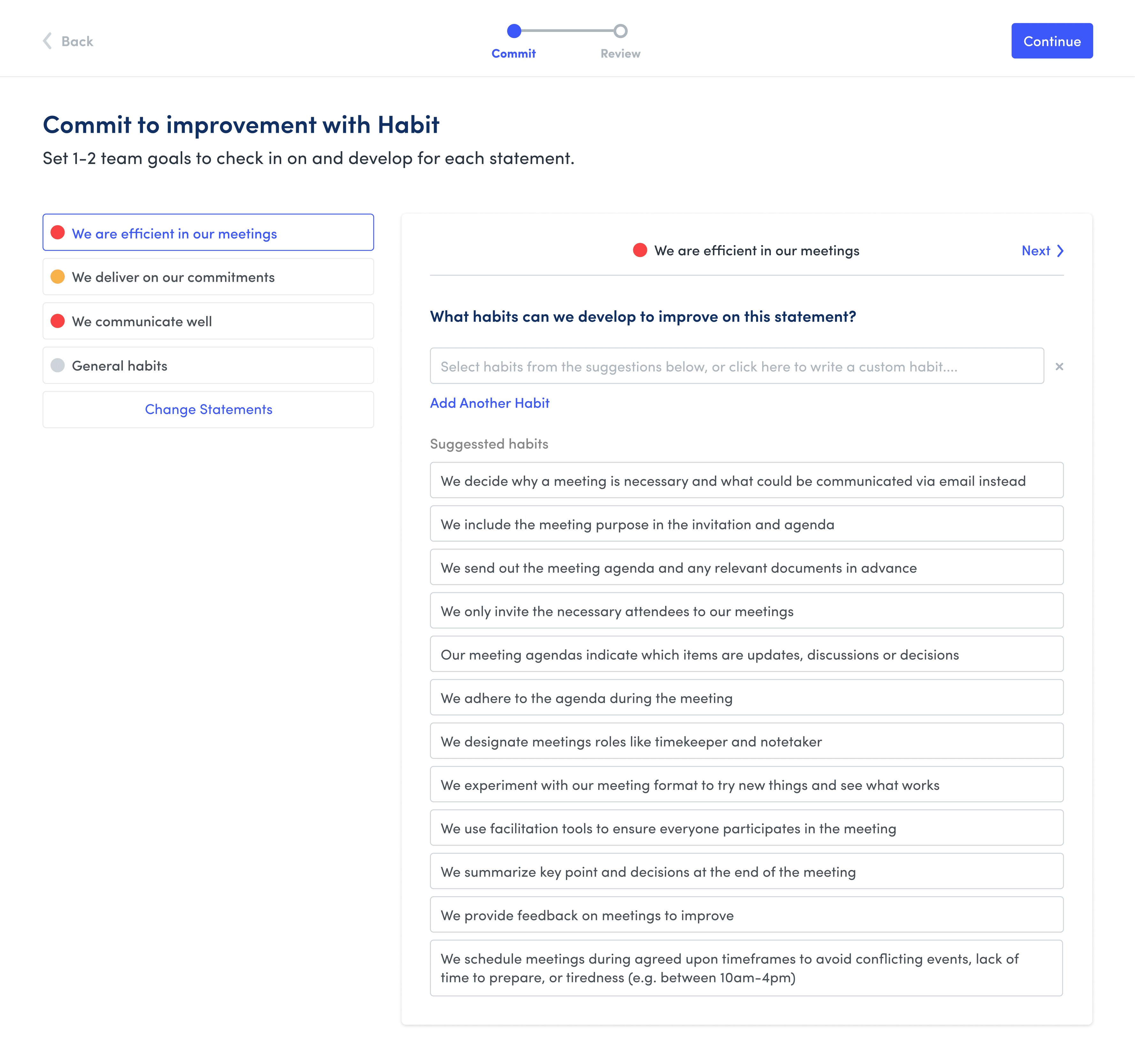
Instead of multiple empty text fields, one text field is joined by suggested Habits. The user can create a custom Habit in the text field, or choose from available suggestions below. Making suggestions a focus of the experience is intended to make the process of thinking of and creating Habits simpler for the user.
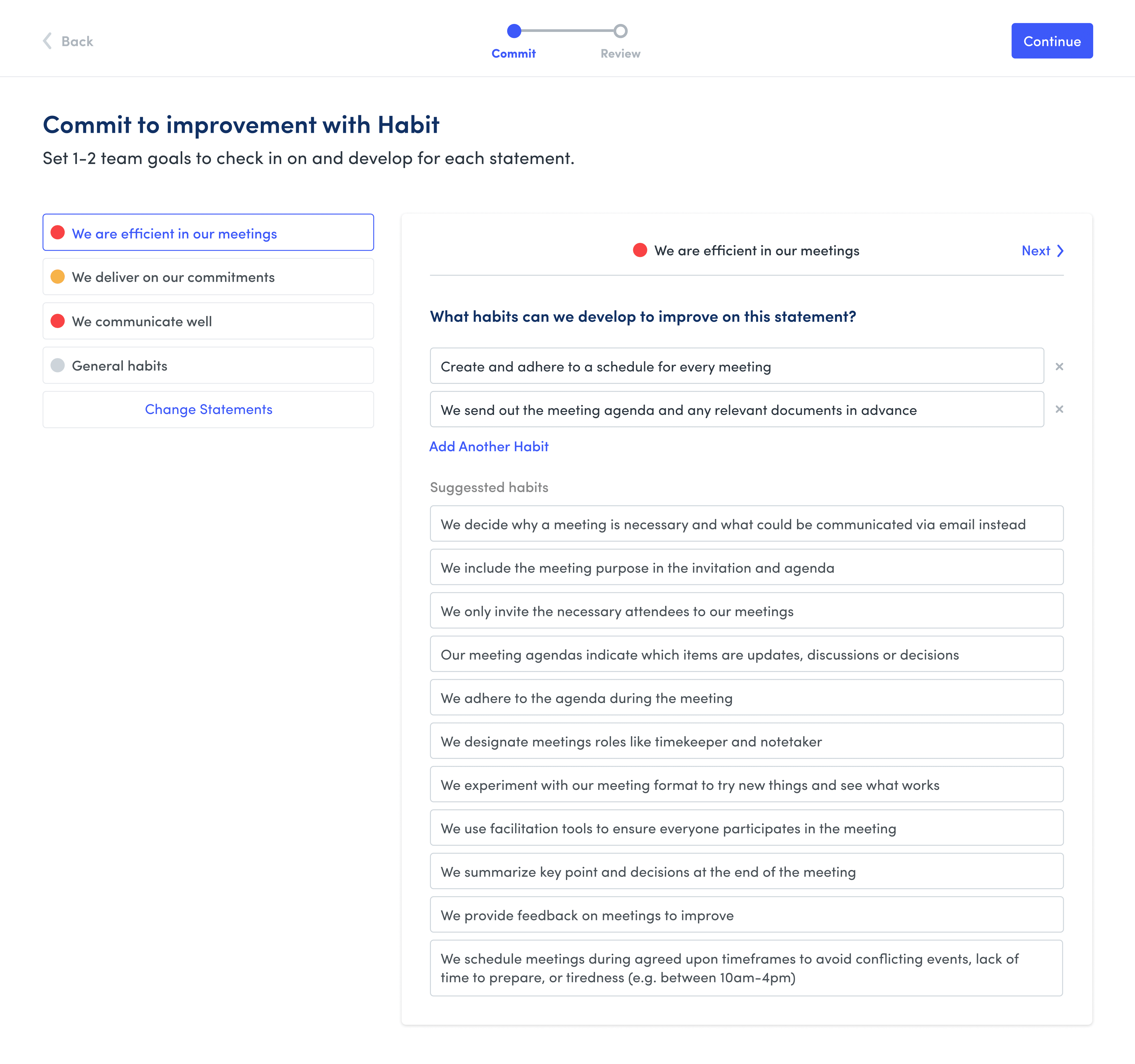
The user can navigate between statements using the statement navigation to the left, or the navigation text within the right pane. Once they are satisfied with their Habits, they can move on to the Review step to review and launch the exercise.
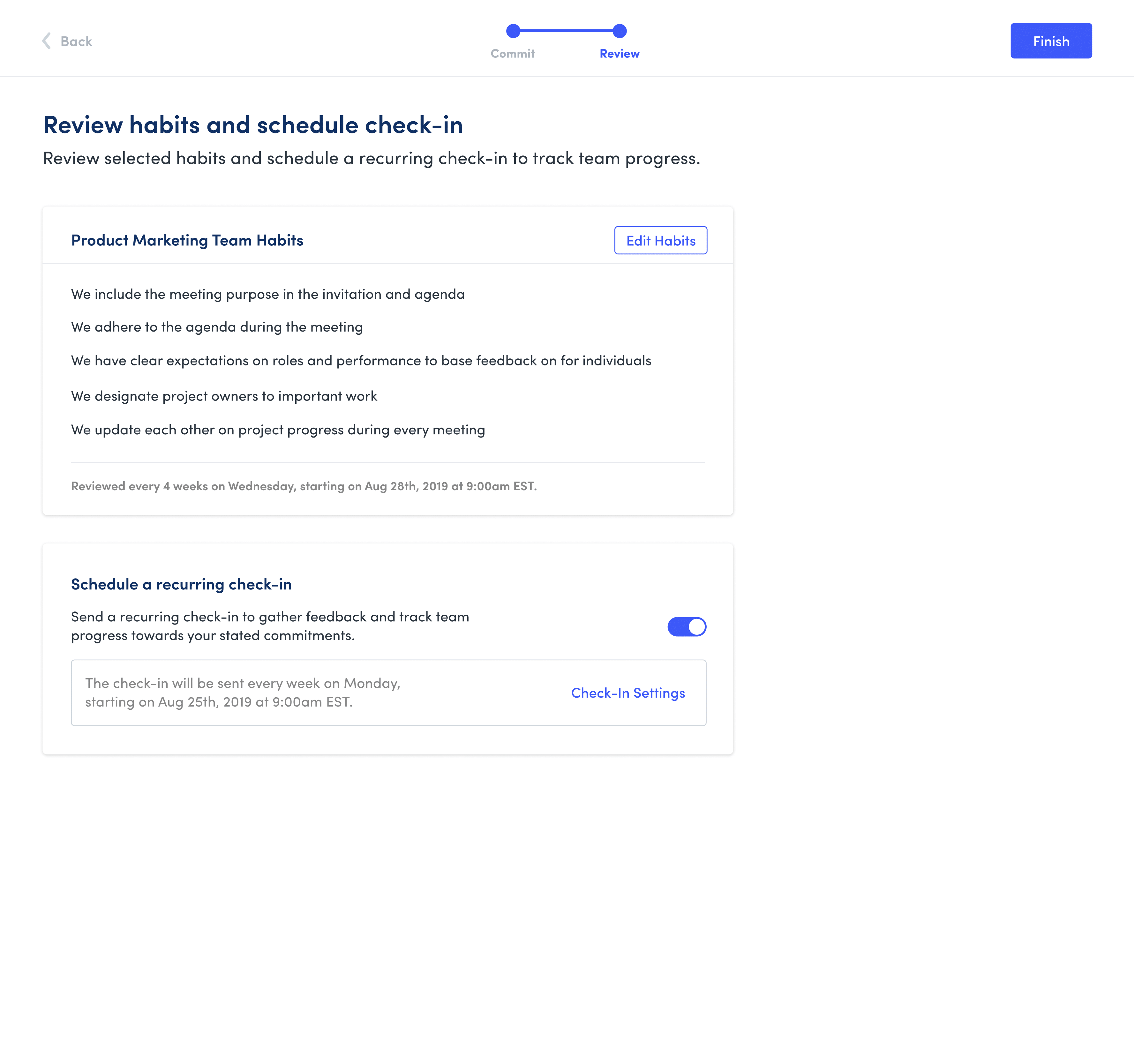
All flows have a Review step following the Create Habits step, which previously was inconsistent between flows, but is now identical.
Because Habits were separated by statement in the previous step, a review of all chosen/created Habits needed to be inserted into the Review step, so that the user can review them all at once. I also redesigned the Check-In settings and added copy to increase clarity and reduce clutter.
There were a couple scenarios that I made sure to account for in my final designs. For example, what happens if the user chooses not to add statements at the beginning of the flow?
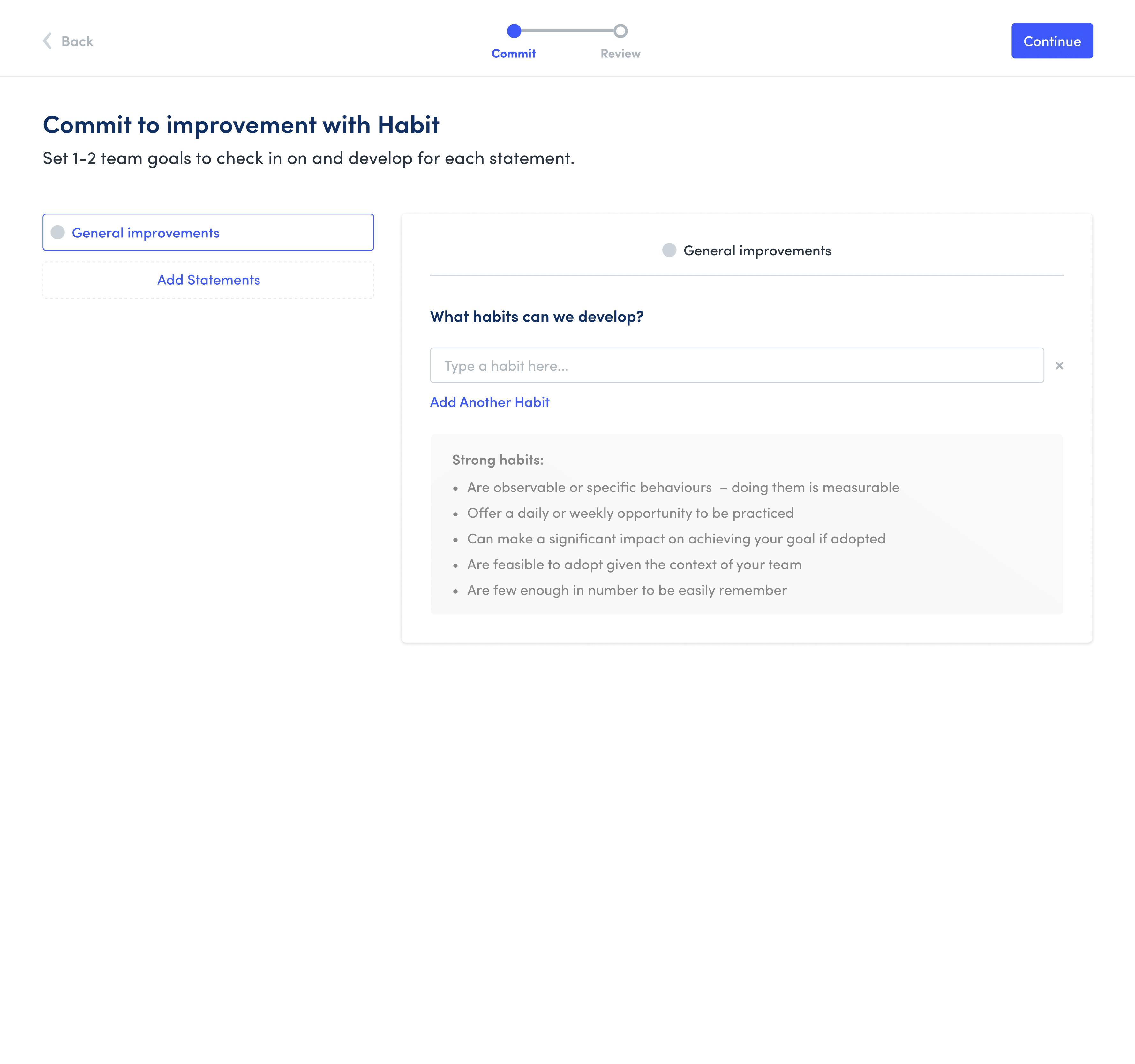
I included a "statement" called "General improvements" that not only captures users who choose not to add statements, but can also be utilised if the user is interested in creating Habits that don't fit in to any of their chosen statements.
In lieu of suggestions, I included tips for creating strong Habits, so that the user is not left without any guidance. These tips also appear in the event that a given statement does not have any available suggestions.
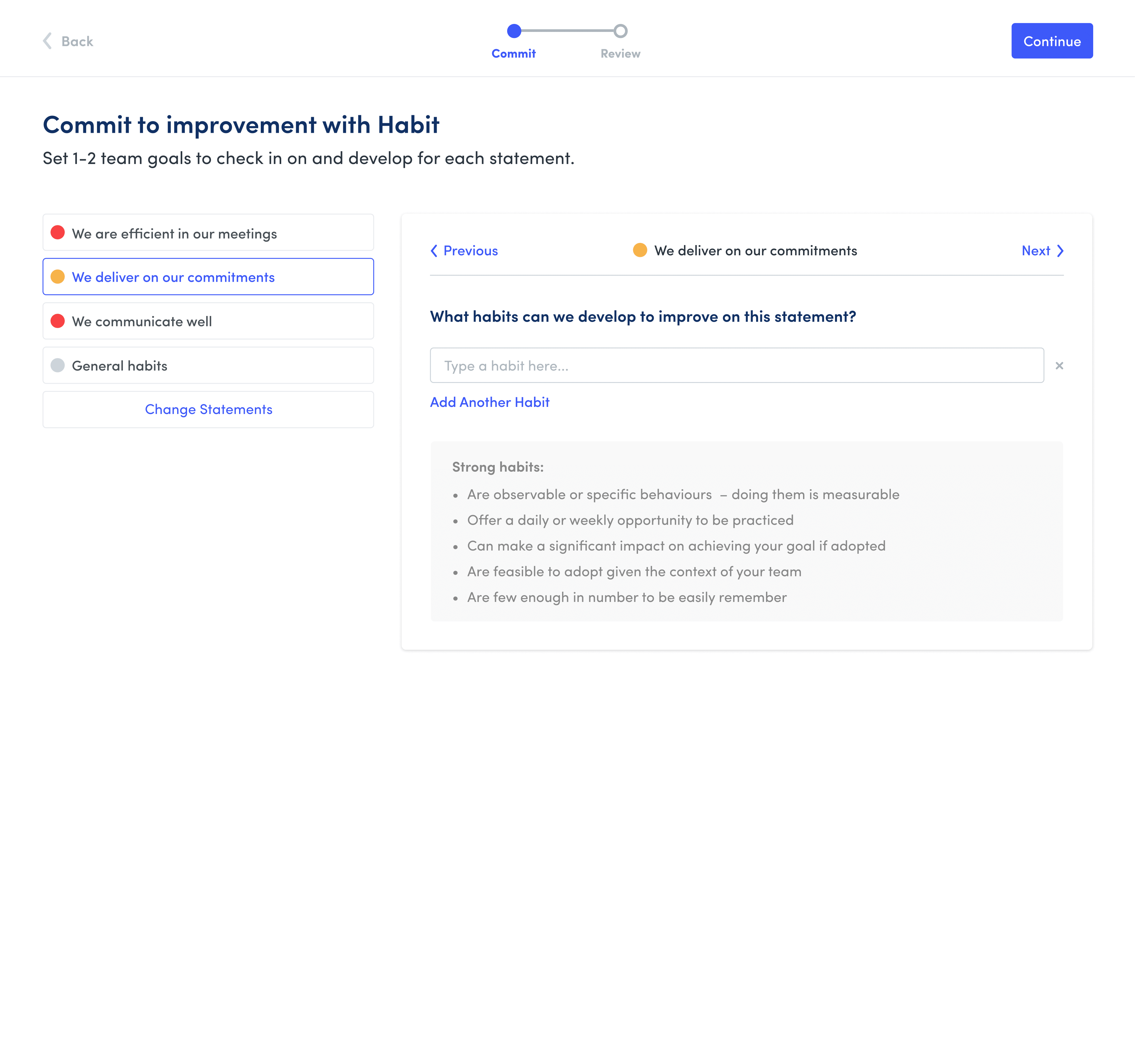
I also wanted to make sure the new design accomodated the Personal Habits flow as well. We had a large library of Habit suggestions for Personal habits, organized into soft skill categories like "listening" and "communicating." I was able to modify the flow I had created for adding statements to allow the user to focus their Habits on specific skills and get tailored suggestions. Because of this, the experience of creating personal Habits feels very similar to the experience of creating team Habits.

